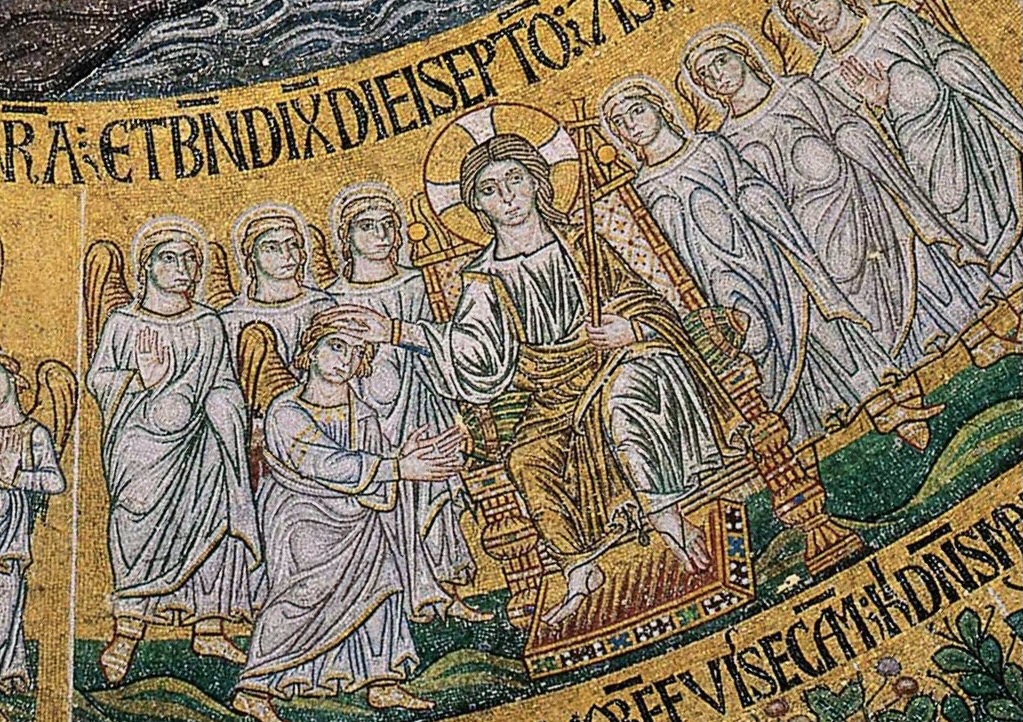“Reset/Refresh” Sabbath as rest, not distraction

I’ve been given a fresh perspective on the start of the school year courtesy of my own son starting at college. We helped him to move in a couple of weekends ago, following a 950-mile road trip. Though my wife and I are confident in his ability to find his way and thrive so far from home, the temptation to compensate for the distance by incessantly contacting him is strong. Mostly, we’re succeeding by reminding ourselves that he’s up to the challenge.
With this in my head, I was pleasantly struck by Kara Root’s observation that the description of God, resting on the seventh day of creation, might be imagined as the Trinity stepping back from all the creative work, and saying with joy to creation “I love watching you be you.“
What I find compelling about this insight — apart from the reminder that I need to let my son do his thing and find joy in that — is that it places the seventh-day rest (a.k.a. The Sabbath) into a context of relationship. When regarded in this way, rest is not an absence of activity, but a presence with and for one another that is all about appreciation and thanksgiving. It isn’t about getting anything done or doing nothing, it’s about loving.
This relational dynamic is illustrated by the work of the artists who created the mosaics that line the domed ceiling in the atrium of Saint Mark’s Basilica in Venice. This monumental mosaic presents the whole story of creation from the first day to Adam and Eve’s fall into sin using designs drawn from the lavish illustrations created for a fifth-century copy of the Book of Genesis in Greek made in Alexandria Egypt. The detailed color pictures accompany the biblical text so that the whole thing works almost like a comic book.
For the creation account, the artist presents each of the days of creation as individual angels. They are personifications of the divine word in action, making everything that is. So there’s an angel dividing light from darkness and another separating the water from the land. As each day progresses, the preceding angels are in the scene, watching as God (who is pictured as Jesus Christ, the divine Word) and that day’s angel do their thing. Each of the pictures read clearly until the seventh day, the day of rest. The “problem” is there’s nothing for the seventh-day angel to do!
There is only just to be.
As you can see in the detail above, the angels of the six previous days are all lined up three on each side of Jesus’ throne. The angel of the seventh day is simply present, receiving a blessing which is a sign of God’s love for creation. The banner above the scene reads “ET B[ENE]DIX[IT] DIEI SEPT[IM]O” “And [God] blessed the seventh day.” (Genesis 2:3)
Now, some of us do our best resting alone. We need time by ourselves to recharge. But lots of us are not resting when we’re by ourselves. We’re isolated by the tasks we’re trying to manage and hope to perform to expectation. Sure, our devices keep us connected, but mostly they keep us distracted.
That’s why we who serve in the Division of Calling and Spiritual Life are proposing an initiative we’re calling Reset/Refresh. We’re committing to putting down our phones and tablets and setting aside our lists at 10 a.m. each weekday for 40 minutes, and we invite you to consider doing the same for some or all of the days. Yes, there will be a Morning Prayer service in the Chapel of the Resurrection at 10:10am, and you’re welcome to attend. You could also find a friend and go for a walk if the weather is good, or you could sit down for a cup of coffee. It’s just good to set the time aside to be with one another, so say “I love watching you be you.”
Be blessed,
Aug. 23, 2023
Rev. Katherine Museus and Rev. James A. Wetzstein serve as university pastors at the Chapel of the Resurrection at Valparaiso University and take turns writing weekly devotions.
You can learn more about the mosaics of Saint Mark’s Basilica in Venice in a comprehensive study by Otto Demus in the collection of the Christopher Center.
- James Wetzstein
- “Light” and Other “L” Words
- Keeping Up with the Holy Spirit
- It’s a Three Day Weekend!
- Divine Love Can’t Quit You
- I Had a Bit of a Moment
- What to do When Our Resolutions Don’t Deliver
- Have Yourself a Merry Little Christmas (Somehow)
- Adventing in the Meantime
- Life and Death Collisions
- Imagining Eternity
- Where is God for You?
- All You Need Is Love, Love Is All You Need
- God Uses Crooked Sticks to Draw Straight Lines
- “Reset/Refresh” Sabbath as rest, not distraction
- At least we’re all friends again
- Blessed are you peacemakers
- Forgiveness: the necessary miracle
- How to Recover from an Epic Failure
- In Praise of Skeptical Disciples
- It’s a Matter of Trust
- Light Shows Up
- Looking Forward!
- Mercy makes us uncomfortable
- Of fear and failure
- Open up!
- Standing with (New Year’s) Resolution
- The Touch
- To God be the glory
- We are always on the way